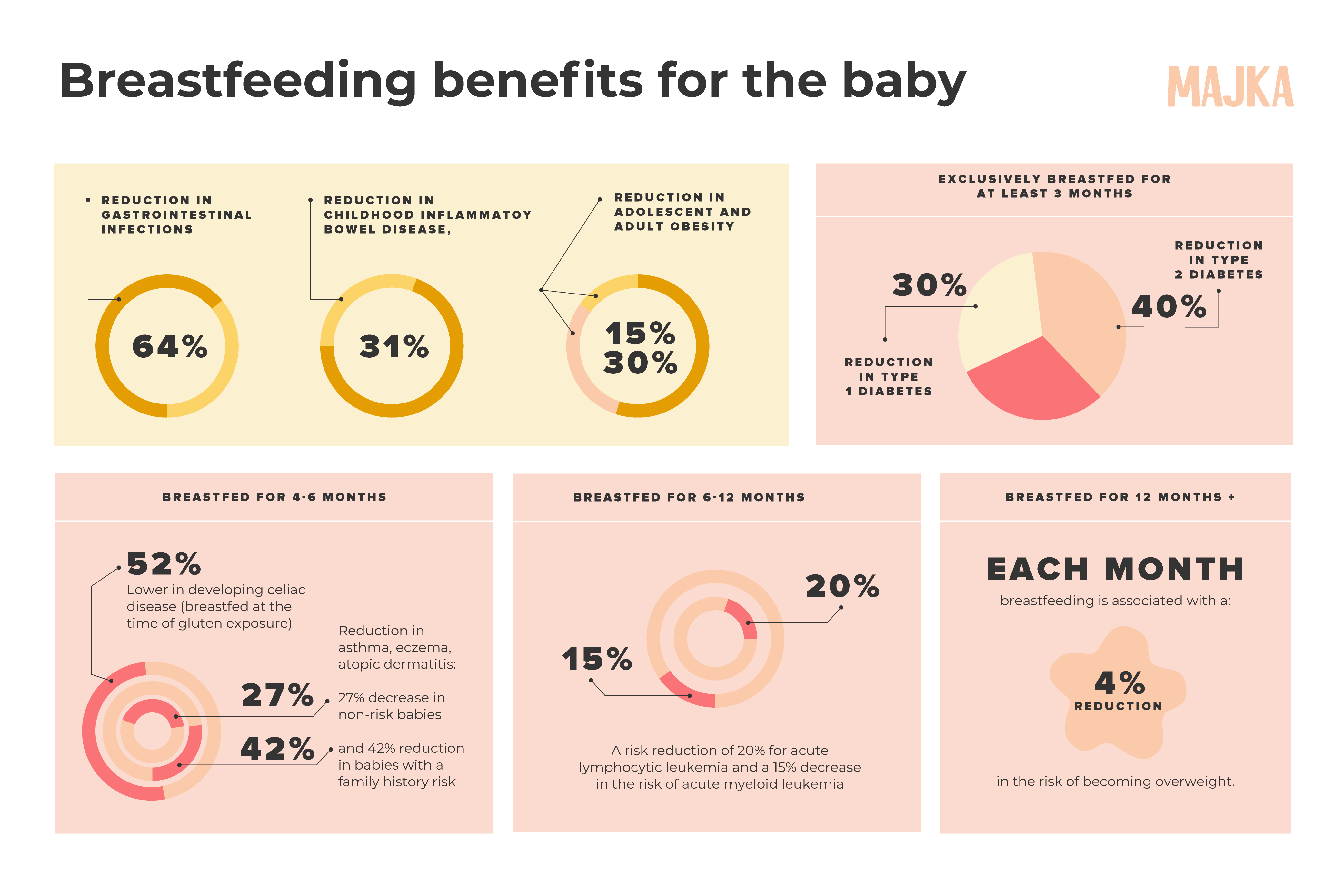Breastfeeding The UK has one of the lowest breastfeeding rates in the world. Breastfeeding significantly reduced the risk of breast cancer in women carrying the.

Infographic With Breastfeeding Statistics In The Us Created In Honor Of World Breastfeeding We World Breastfeeding Week Breastfeeding Education Breastfeeding
This is higher than the aggregate breastfeeding rate.

Uk breastfeeding rates compared to world. Results are evaluated and compared in a narrative review. There are limited data available to compare trends in breastfeeding internationally particularly at age 6-8 weeks when current UK data are recorded. A Comparison of Breastfeeding Rates by Country.
Most countriesrich and poor alikeare off track to meet. Directly after birth between 56 and 98 of infants in all countries were reported to receive any human milk and at 6. The percentage of babies ever being breastfed was above 88 in all of those countries reaching above 99 in Bhutan Nepal and Sri Lanka.
An analysis of global breastfeeding prevalence found that in the UK only 34 of babies are receiving some breast milk at 6 months compared with 49 in the US and 71 in Norway. The aggregate breastfeeding rate for England for 201819 is 462 with confidence intervals of 461 463. 1-7 August is World Breastfeeding Week.
Speaking at the British Science Festival Dr Amy Brown Associate Professor at the University of Swanseas College of Human and Health Sciences stated that by 12 months the UK has the lowest rates of breast-feeding worldwide at just 05. The data published in the Lancet shows that only one in 200 women - or 05 - is still. The chart below was downloaded from the website of LaLeche League International in May of 2012.
Variation exists in Europe on breastfeeding rates. Of the 135 million babies born every year only 42 are breastfed within the first hour of life only 38 of mothers practice exclusive breastfeeding during the first six months and 58 of mothers continue breastfeeding up to the age of two years. Yet worldwide rates of breastfeeding are low particularly in high-income countries.
Exclusive breastfeeding rates among children under 6 months are well below 50 percent in most countriesthe current World Health Assembly 2025 target. For example the UK. Exclusive breastfeeding at three months.
81 up from 76 in 2005 Exclusive breastfeeding at six weeks was 24 in England compared to 17 in Wales and 13 in Northern Ireland see below for more recent survey results from Scotland. The data for low-. Rates of breastfeeding in Europe Asia Africa North and South America and the Middle East with reference for detailed breastfeeding rates in the United States.
How Britain compares with the rest of the world in terms of breastfeeding. This is based on 127 out of 129 reporting local authorities submitting a return and passing initial validation. See NHS England for 6 to 8 weeks breastfeeding statistics from before October 2015.
In the USA 74 per cent of babies ever receive breastmilk. However breastfeeding rates in many countries in the WHO European Region are low and some mothers with low socioeconomic status are less likely to begin breastfeeding. Click on the graphic to see a larger version.
Uruguay almost all babies are breastfed but in others rates are far lower. Yet despite this growing body of evidence global rates of breastfeeding have not substantially increased in the past two decades. 12 up from 7 in 2005.
The aggregate breastfeeding rate for England for Quarter 3 201920 is 482 with confidence intervals of 479 485. Rates of breastfeeding in the UK are the lowest in the world an international study shows. 340 of babies are receiving any breastmilk at six months compared with 625.
At the heading of the chart was Breastfeeding Statistics September 15. Earlier this year a report revealed that the UK has one of the lowest rates of breastfeeding in the world with just 34 per cent of babies receiving breast milk at six months of age compared to. Ever wonder how breastfeeding rates compare from country to country.
She compared this to rates in Scandinavia where 98 of women breastfeed immediately after birth and 80 are still doing so at six months whereas in the UK. See below and the Department of Health for earlier and archived breastfeeding statistics. The findings reveal that 95 of the mothers agreed that breastfeeding is their preferred choice for young babies73 breastfed or planned to breastfeed for 49 weeks or more.
Following are graphics showing breastfeeding rates in Australia Canada Sweden the UK and the US from 2004-2009. There is substantial variation between parts of England with 46 of infants breastfed at six to eight weeks in the East Midlands in 201920 compared to 34 in the North East data not shown. And mechanisms for support protection and promotion of breastfeeding.
In Ireland just 55 per cent are breastfed. This is based on 145 out of 150 reporting local authorities. The findings reveal that 95 of the mothers agreed that breastfeeding is their preferred choice for young babies 73 breastfed or planned to breastfeed for 49 weeks or more.
17 up from 13 in 2005 Exclusive breastfeeding at four months. Bhutan 99 percent Madagascar 99 percent and Peru 99 percent have the highest nursing rates Ireland 55 percent the US 74 percent and Spain 77 percent have some of the lowest rates. Such variations are not observed in low- and middle-income countries.
Breastfeeding is the best option for infant feeding and also has long-term health benefits for mothers. Methodology for data collection.

Breastfeeding Rates Around The World 2016 Data Breastfeeding Globalhealth Newborn Mypresque Breastfeeding Breastfeeding Facts Breastfeeding Support

Breastfeeding In The 21st Century Epidemiology Mechanisms And Lifelong Effect The Lancet

Breastfeeding Rates In The Seven Study Countries In The Southeast Download Scientific Diagram

Breastfeeding Stats And Facts 2021

Breastfeeding Rates In The Seven Study Countries In The Southeast Download Scientific Diagram